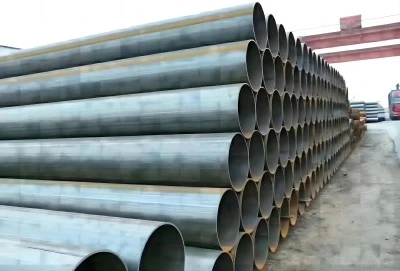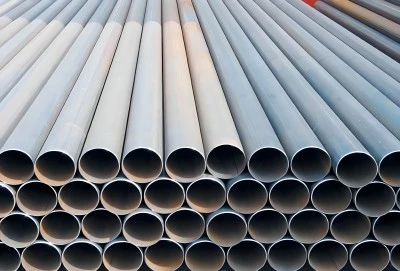In the world of structural steel pipes, two European standards stand out: EN10210 pipe and EN10219. These standards define the technical delivery requirements for structural hollow sections, but they differ significantly in terms of manufacturing processes, material properties, and applications. This comprehensive comparison will delve into the key differences between EN10210 and EN10219 pipes, helping engineers, contractors, and procurement specialists make informed decisions when selecting structural steel pipes for their projects.
|
|
|
Hot Working vs Cold Working:
The primary distinction between EN10210 and EN10219 pipes lies in their manufacturing processes. EN10210 pipes are hot-worked, while EN10219 pipes are cold-formed. This fundamental difference significantly influences the properties and performance of the resulting products.
EN10210 pipes undergo a hot-working process, where the steel is heated to temperatures above its recrystallization point (typically around 900°C to 1300°C) during forming. This high-temperature treatment offers several advantages. Firstly, it enhances the material's plasticity, allowing for easier shaping and forming of the pipe. The elevated temperature reduces the steel's yield strength and increases its ductility, facilitating the formation of complex shapes without introducing excessive internal stresses.
Moreover, the hot-working process contributes to grain refinement in the steel's microstructure. As the steel cools from these high temperatures, new, finer grains form, resulting in a more uniform and refined microstructure. This refined grain structure translates to improved mechanical properties, particularly enhanced toughness and strength.
The hot-working process also helps to homogenize the steel's composition, reducing segregation and ensuring more uniform properties throughout the pipe. This is particularly beneficial for larger diameter pipes, where achieving consistent properties can be challenging.
In contrast, EN10219 pipes are cold-formed, meaning they are shaped at room temperature or slightly elevated temperatures, but well below the steel's recrystallization point. This process involves bending flat steel strips into a tubular shape and welding the seam. While cold-forming is generally more economical and allows for tighter dimensional tolerances, it doesn't offer the same metallurgical benefits as hot-working.
The differences in manufacturing processes make EN10210 pipes generally more suitable for applications requiring high strength, excellent toughness, and the ability to withstand significant loads. These pipes are often preferred in critical structural applications, such as in bridges, high-rise buildings, and offshore structures.
Material State In EN10210:
Another crucial distinction between EN10210 and EN10219 pipes lies in how their material grades are defined and the implications this has on their final properties. This difference is rooted in the manufacturing processes and has significant consequences for the pipes' performance and applications.
For EN10210 pipes, the grade specified in the standard refers to the properties of the finished hollow profile. This means that the mechanical and chemical properties listed in the standard are those that the pipe must meet after the hot-working process is complete. This approach provides a clear and direct understanding of the pipe's capabilities in its final form.
The hot-working process used in manufacturing EN10210 pipes allows for a more predictable and consistent relationship between the raw material properties and the finished product properties. The high temperatures involved in hot-working help to homogenize the steel's microstructure and relieve internal stresses, resulting in a product whose properties are closely aligned with those of the initial material, albeit with improvements in grain structure and uniformity.
In contrast, the grade specified for EN10219 pipes refers to the properties of the steel raw material before it undergoes the cold-forming process. This distinction is crucial because the cold-forming process can significantly alter the steel's metallurgical structure and, consequently, its mechanical properties.
This difference in material state definition has important implications for design and specification. When working with EN10210 pipes, engineers can rely directly on the specified grade properties for their calculations and designs. With EN10219 pipes, however, it's important to consider that the actual properties of the finished pipe may differ from those of the raw material grade. In some cases, additional testing or conservative design approaches may be necessary to ensure the pipe meets the required performance criteria in its final form.
Application:
While both EN10210 pipe and EN10219 pipes find widespread use across various industries, their distinct properties, resulting from different manufacturing processes, lead to preferences in specific application areas. Understanding these typical application domains can help in making informed decisions when selecting structural steel pipes for various projects.
Some of the key application areas for EN10210 pipes include:
1. Bridge Construction: The high strength and superior fatigue resistance of EN10210 pipes make them ideal for use in bridge structures, particularly in load-bearing elements and truss designs.
2. High-Rise Buildings: In tall structures where strength-to-weight ratio is crucial, they are often used for columns, beams, and other primary structural elements.
3. Offshore Structures: The excellent toughness and corrosion resistance make them suitable for use in offshore oil and gas platforms, wind turbines, and other marine structures.
4. Heavy Industrial Equipment: In applications such as cranes, excavators, and other heavy machinery, these pipes are used for their ability to withstand high stresses and dynamic loads.
5. Power Transmission Towers: The combination of strength and lightweight properties makes EN10210 pipes a good choice for electricity transmission towers, particularly in areas prone to extreme weather conditions.
6. Sports Stadiums: Large-span roof structures and supporting frameworks in stadiums often utilize EN10210 pipes for their strength and aesthetic appeal.
7. Aircraft Hangars: The need for large, clear spans in hangar designs often leads to the use in the structural framework.
On the other hand, EN10219 pipes, while still widely used in construction and mechanical applications, are typically chosen for less demanding applications or where cost considerations are paramount.
China EN10210 Pipe Factory:
Longma, a reputable China-based manufacturer, specializes in the production of EN10210 pipes, offering high-quality products that meet international standards. With a commitment to excellence and customer satisfaction, Longma has established itself as a trusted supplier in the global market for structural steel pipes.
The company's expertise in manufacturing EN10210 pipes extends to various grades and sizes, catering to different sectors including construction, infrastructure, and industrial applications. Their production processes adhere strictly to the EN10210 standard, ensuring that each pipe meets the required mechanical properties, dimensional tolerances, and quality benchmarks.
For those in search of reliable EN10210 pipe manufacturers, Longma welcomes inquiries and consultations. Their team of experts is ready to assist with product selection, technical specifications, and customization options. Interested parties can reach out to Longma at info@longma-group.com for more information about their products, capabilities, and how they can meet specific project needs.














